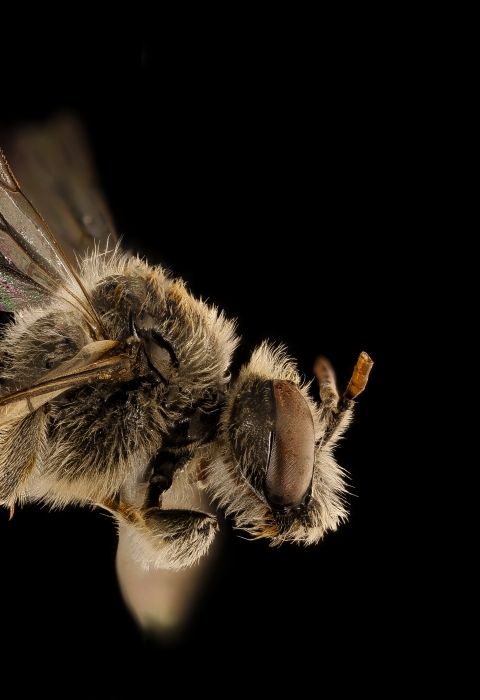We at the U.S. Fish and Wildlife Service know that protecting rare pollinators is a team effort. We’re pleased to share that a team of biologists made a remarkable find of a rare native bee at Whittlesey Creek National Wildlife Refuge in Wisconsin. A female Epeoloides pilosulus, a type of cuckoo bee, was found in July 2022 by Partners for Fish and Wildlife biologists surveying the refuge as part of a Great Lakes Restoration Initiative Pollinator Task Force effort and was recently confirmed by a native bee biologist.
“Our team is pivotal to the pollinator task force,” said U.S. Fish and Wildlife Service Partners for Fish and Wildlife Biologist Meri Holm, who serves as the Great Lakes Restoration Initiative pollinator coordinator. “It confirms that our work with landowners to help them voluntarily conserve and improve pollinator habitat is important and is making a difference.”
The insect was once widespread across eastern and central North America but was thought to have gone extinct, with the last documented collection of the species in the United States dating back to 1942. That all changed in 2002, when the bee was documented in Nova Scotia, Canada. The Great Lakes Restoration Initiative Pollinator Task Force had the most recent recorded sighting in 2019, discovering two male Epeoloides pilosulus, on the Chequamegon-Nicolet National Forest. This is only the second time this species has been confirmed in Wisconsin since 1910, first one was found in Dane County and second in Bayfield County.
This survey goes even deeper than finding one rare bee. Along with the Epeoloides pilosulus, a Macropis bee was observed during the survey on a fringed loosestrife plant, which tells us even more. It’s interesting to note that cuckoo bees are cleptoparasites: the cuckoo bee larvae eat the pollen provided by Macropis bees. The Macropis bee is a specialized pollinator, only collecting floral oils and pollen from the Lysimachia plant family, commonly called loosestrife. Specific plants can mark points in a given landscape as potential places to find these rare species. With that in mind, finding abundant yellow loosestrife plants signal to the survey team that there’s a potential presence of Macropis bees, which in turn could provide evidence of a cuckoo bee. Out of sight doesn’t always mean extinct.
Both surveys conducted in Wisconsin are part of a larger multi-year effort. Formed in 2017, the Great Lakes Restoration Initiative Pollinator Task Force is a multi-agency team led by the U.S. Fish and Wildlife Service in coordination with professionals from the U.S. Forest Service, National Park Service, U.S. Geological Survey, Natural Resources Conservation Service and Environmental Protection Agency. The collective goal is to conserve native pollinator populations across the Great Lakes Basin. Our team also aims to reduce or eliminate the need for listing species like these under the Endangered Species Act in the future. To make this possible, we are focused on increasing the resiliency of native insect pollinators and their habitats. Additionally, we target restoration of diverse, interconnected habitat across the landscape. All of these goals are built on one central objective – to get you to learn about these lesser known pollinators and to get you to care. Knowing about native pollinator conservation issues and collaborative efforts like this are foundational for our work across the Great Lakes.
Learn more about how we’re making a future for native pollinators.
Learn more about how you can help restore habitat for pollinators on your land.




